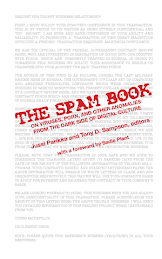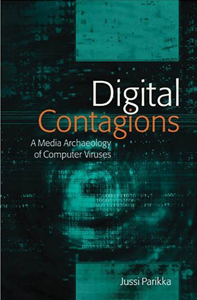What are affects good for? I am not referring to the stuff going through your body and your mind, but the concept. ArcDigital and RIBs (Representation, Identity and the Body) theme year on Affect was kicked off yesterday with discussions based on Nigel Thrift's and Eric Shouse's texts. Good points followed, so many I cannot summarize them here. But for me, its the possibility of tapping to various weird materialities that "affect" affords us. This ranges from the 0.5 second delay between event and consciousness Wundt talked about, the odd reactions that Reagan talking can have, the relationality of bodies in movement, as well as for example the software objects defined by their relations -- i.e. also non-human affects being possible. Affects are the element of transformation, and transmission -- of bodies relating and being in their relatedness. As Joss Hands pointed out, the danger of the concept is becoming too wide, too vague. Hence, there is no one big theory of affect, just good uses in contexts where we need to think beyond signification, representation and the human.
Affects are more -- they are the primary surplus due to their by definition relational nature. This is where the connection to sensations might become clearer. To quote Massumi: "Sensation is the registering of the multiplicity of potential connections in the singularity of a connection actually under way. It is the direct experience of a more to the less of every perception." (In Parables for the Virtual, p.92). What is the relation between sensation and affect? Definitely, in the Deleuzian inspired schemes, its not always clear. If affects include/are transitions, sensations travel as well. Consider Deleuze writing on Bacon: "Bacon constantly says that sensation is what passes from one 'order' to another, from one 'level' to another, from one 'area' to another. This is why sensation is the master of deformations, the agent of bodily deformations."
Affects are less. They escape the conscious perception, flee and yet effect, impose on social interaction. Its the mentioned lost time, perhaps -- in terms of capturing the possibility of tapping into the preconscious. We smile before the joke gets funny, we react before the person even starts to make sense, we feel it already before the actual meeting has started. Of course, so closely connected to feelings -- they loop together, as Milla reminds us. It does not stay unnoticed by the intensive body that we engage continously with agendas, structures, classifications and so on of emotions. Affects produce emotions that are shared, but they feedback through various political and social acts of naming etc?
Are they tonalities? Yes, to an extent that tonalities are shared, or connect things/people/entities in time-spaces. Its the in between of perceiver and what is perceived. To again quote Massumi: "The properties of the perceived thing are properties of the action, more than of the thing itself. This does not mean that the properties are subjective or in the perceiver. On the contrary, they are tokens of the perceiver's and the perceived's concrete inclusion in each other's world." (again from Parables of the Virtual, p.90).
Vocabularies for weird materialities? This ranges from bodies in movements, of micromovements on the skin, such concrete inclusions of bodies sharing something and becoming together, of non-human objects/processes defining each other, of feeling the intensity of fastness, slowness, closeness, distance. Its what psychophysiology was keen on mapping in the 19th century in connection with the birth of modern media culture (as always, Jonathan Crary's Suspensions of Perception is the book to read), and what biotechnologies, brain and cognitive sciences and even quantum physics inspect. It is also the regime of things such as somatosenses -- proprioception, kinesthesia, the visceral...(Eleni Ikoniadou who is just finishing her PhD from UEL on rhythmic ontologies is working in this field).
In the midst of a panorama of approaches, what seems to become increasingly crucial is that we need new cartographies of affect -- ones that don't rely only on psychoanalysis etc., but inspect art/science/technology/philosophy as the source of innovation/invention.
To conclude, a good example of such interchanges: Christa Sommerer and Laurent Mignonneau's Nano-Scape system from 2001.
Subscribe to:
Post Comments (Atom)








No comments:
Post a Comment